Adding value to an Icelandic dairy farm
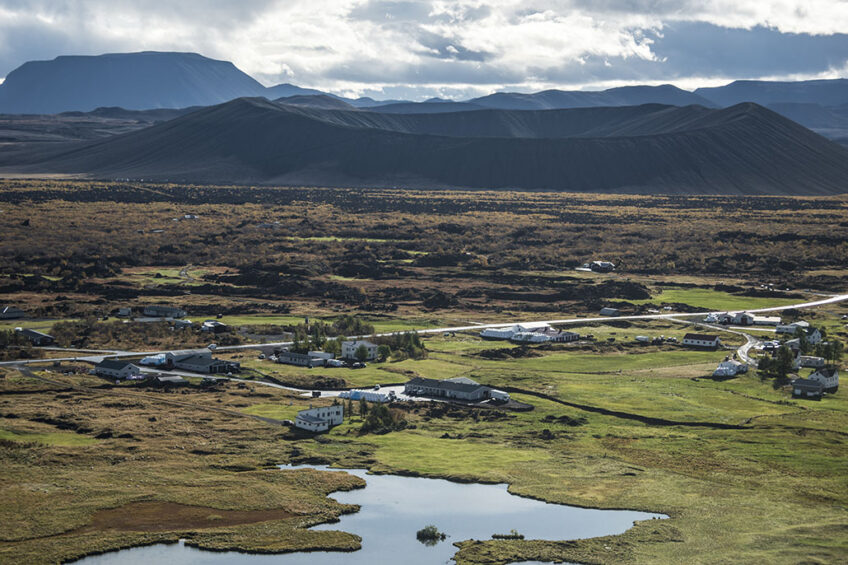
Many dairy farmers add value to their milk by producing and selling their own butter, cheese or ice cream, but very few build a restaurant in their cow barn.
That’s exactly what one family did in Iceland and are now enjoying extra income from the local and tourist trade, firmly putting their farm on the map.
Based in the north of Iceland in the Myvatn area lies Vogafjos Farm, which has been owned by generations of the same family since 1890. Traditionally a cattle and sheep farm, Vogafjos has moved with the times, certainly not by expanding the dairy herd, but by tapping into the big tourism market in Iceland.
Home to only 16 cows, this farm produces milk and meat which is then used to make delicious meals in the restaurant that is located in the cow barn.
Diners in the restaurant can view the cows being milked through the large windows, an experience that has proved very popular with customers. Not only can people eat at the farm, they can also stay there in cabins built especially for the tourists. And with a very picturesque lake beside the farm to visit, it’s easy to understand why this place books up fast.
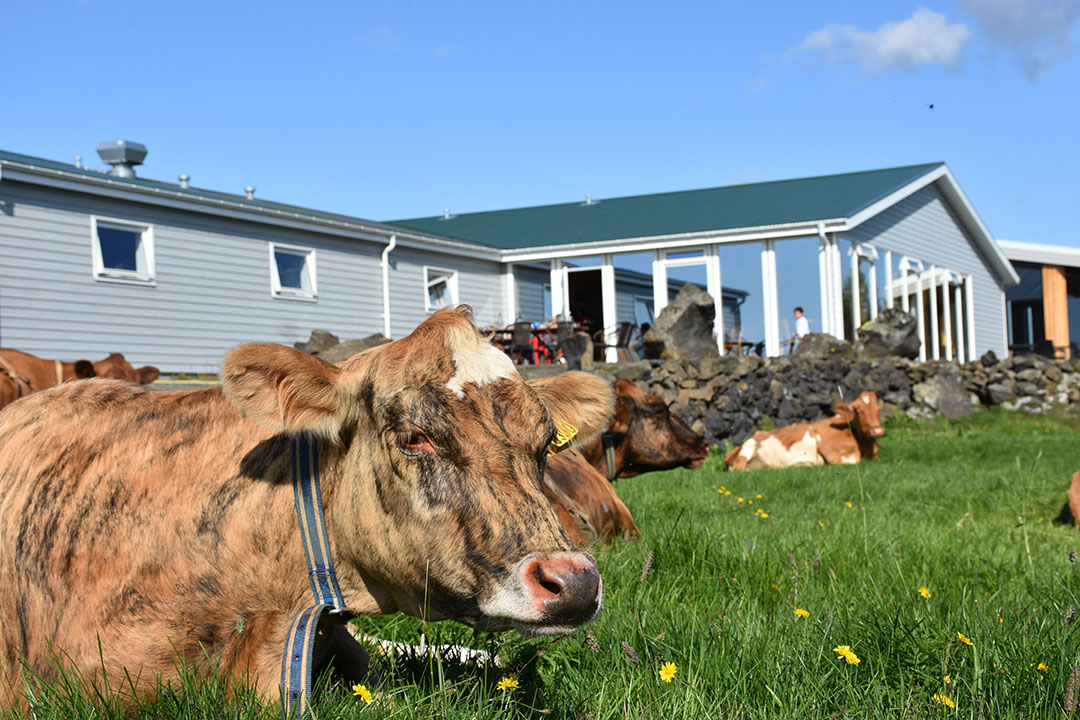
Olof Hallgrimsdottir is the manager who runs the farm and restaurant along with her brother. “I was brought up here and took over the farm with my brother when our father passed away. Now our families own and run the farm with the help of our employees,” she said. “We used to have just the cows and sheep on the farm, but little by little we built up the tourism part. Most of our family members also work out on the farm part-time or full-time.”
Dairy cows Icelandic breed
The farm milks 16 dairy cows and run a further 24 calves of different ages, so about 40 in total. They are all the Icelandic breed, which is a small dual-purpose breed originating from cattle brought in from Norway during the settlement of Iceland in the 10th century.
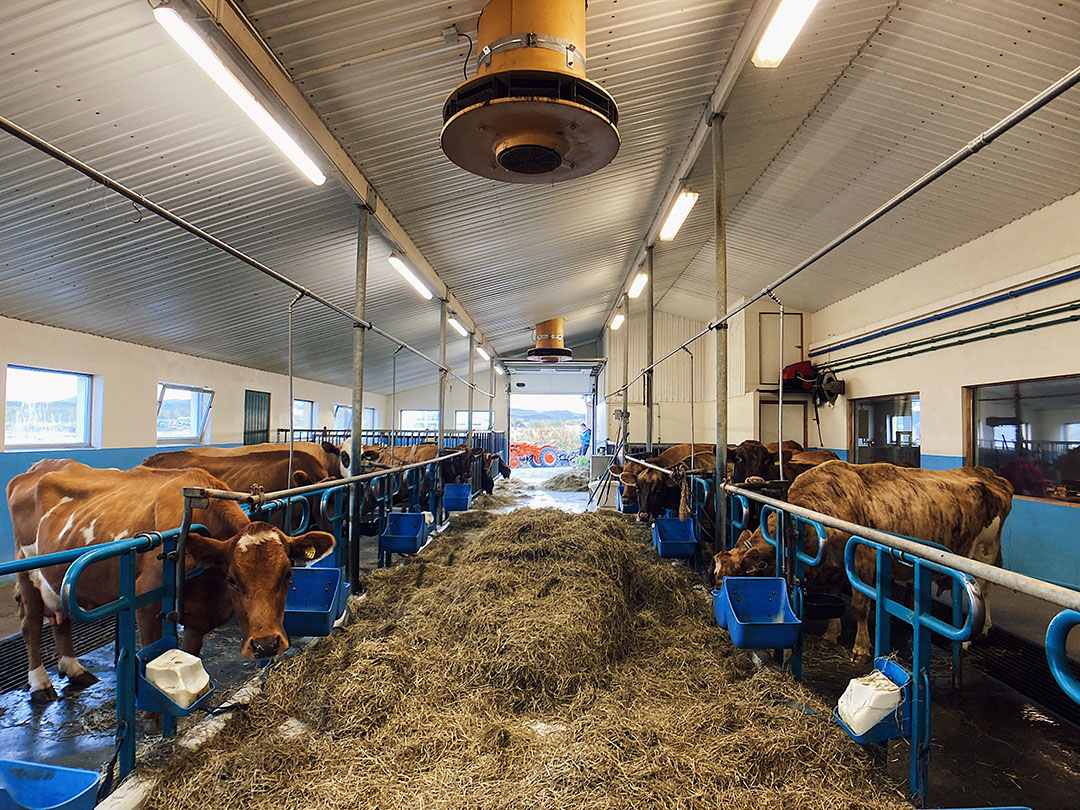
“Our cows are milked twice a day yielding around 20 to 30 litres per day at 4.4% butterfat and 3.6% protein,” Olof adds. “The cows graze outdoors during the summer from approximately the beginning of May until October. This, of course, depends on the weather. We use bulls on the young heifers but switch to artificial insemination after the first calf.”
DeLaval parlour and expansion
The farm uses a small DeLaval parlour to milk the cows with 2 units up each side. The cows are fed mostly hay and grain during the winter time. The milk that is not utilised on the farm for the restaurant goes to a nearby processor, as Olof explains.
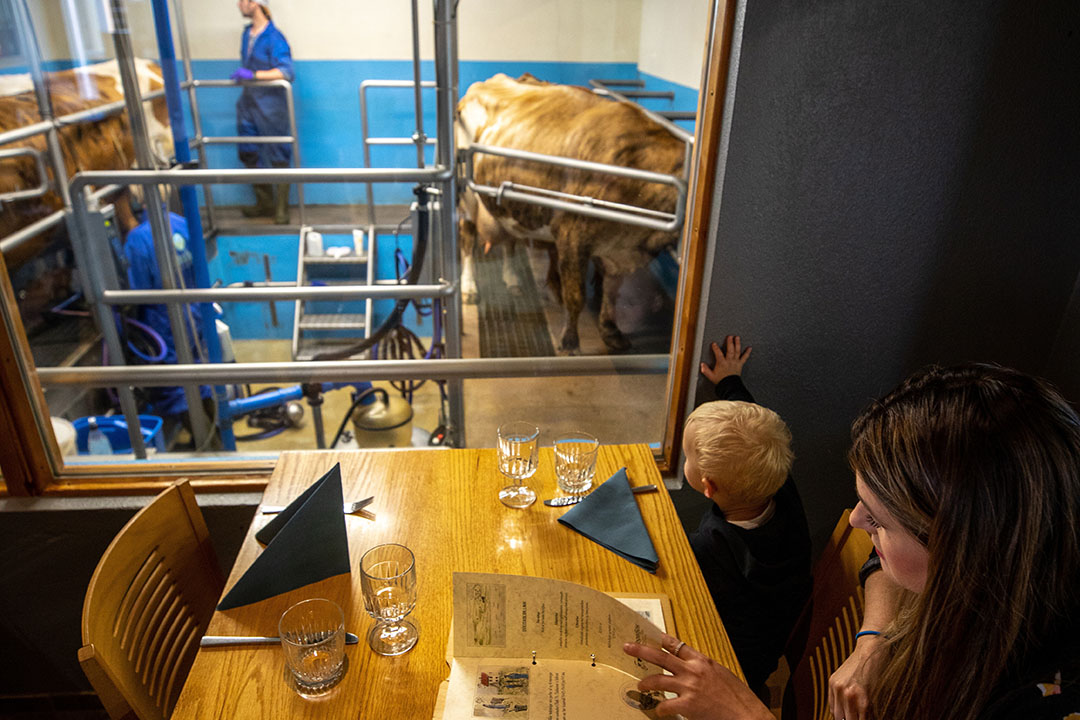
“Any surplus milk we produce that is not used on the farm to make our own cheese and to serve the guests at breakfast time is sold to the Akureyri co-operative. We receive a price of 130 Icelandic Krona (UK£0.75) per litre and then we also get a subsidy each month which is connected to the amount of quota we own,” says Olof.
During the busy summer months, the farm has around 40 staff and 20 during the winter time, mostly working in the restaurant. Olof has further plans to expand the tourism aspect of her dairy farm in the future.
“Our plans are to expand more into tourism,” she says, adding that they want to further diversify by growing their own vegetables in high-tech greenhouses and use the natural hot water springs that they own more efficiently.
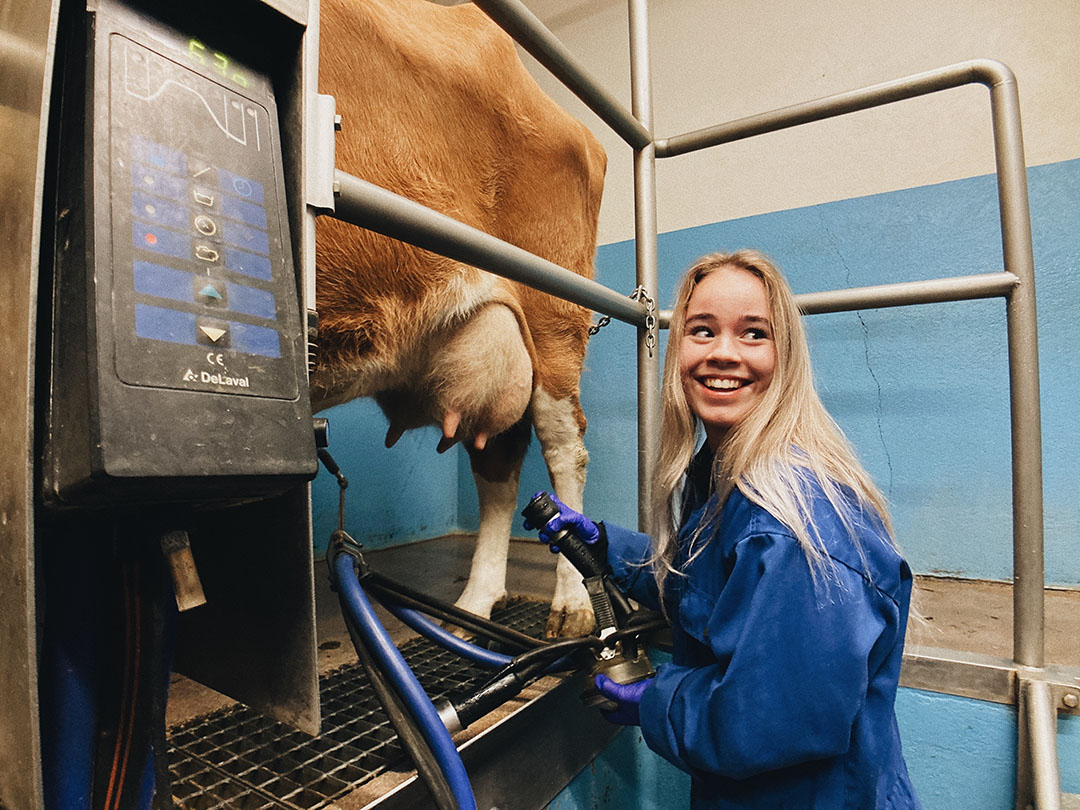
“The main problem we encounter on this farm is that we are 300m above sea level and our fields grow grass later in the season. Also, the grass growth is better in some areas than in others, therefore we have to use more fertiliser to harvest enough hay for the animals. Some of the fields are also far away as our farm is small.”
The restaurant
The restaurant started in 1999. “In the beginning we did not plan to offer food, just coffee and cakes. When we built the new barn for the cows we planned to have a small cafe inside so we could earn some extra money and make the farm more viable.”
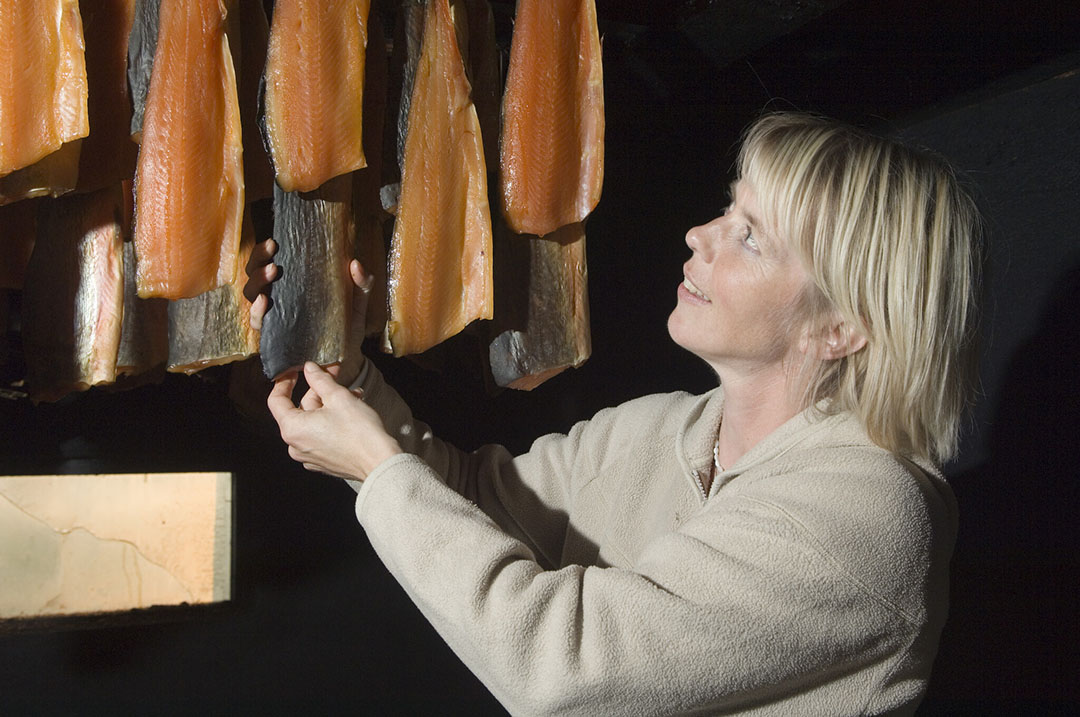
Olof added that after a few years they expanded the cafe to a restaurant and decided to offer mostly local traditional food. “We use all the meat we produce on the farm and sometimes we also buy from our neighbouring farmers.”
“We produce cheese from our milk, and bake bread in the ground, what we sometimes call our underground bakery. All the cakes we serve are baked in our bakery,” she said.
“We also smoke our own lamb using old traditional methods. It is so important that the young generation is always learning from the old one, that is how we keep the old heritage alive,” she says.






